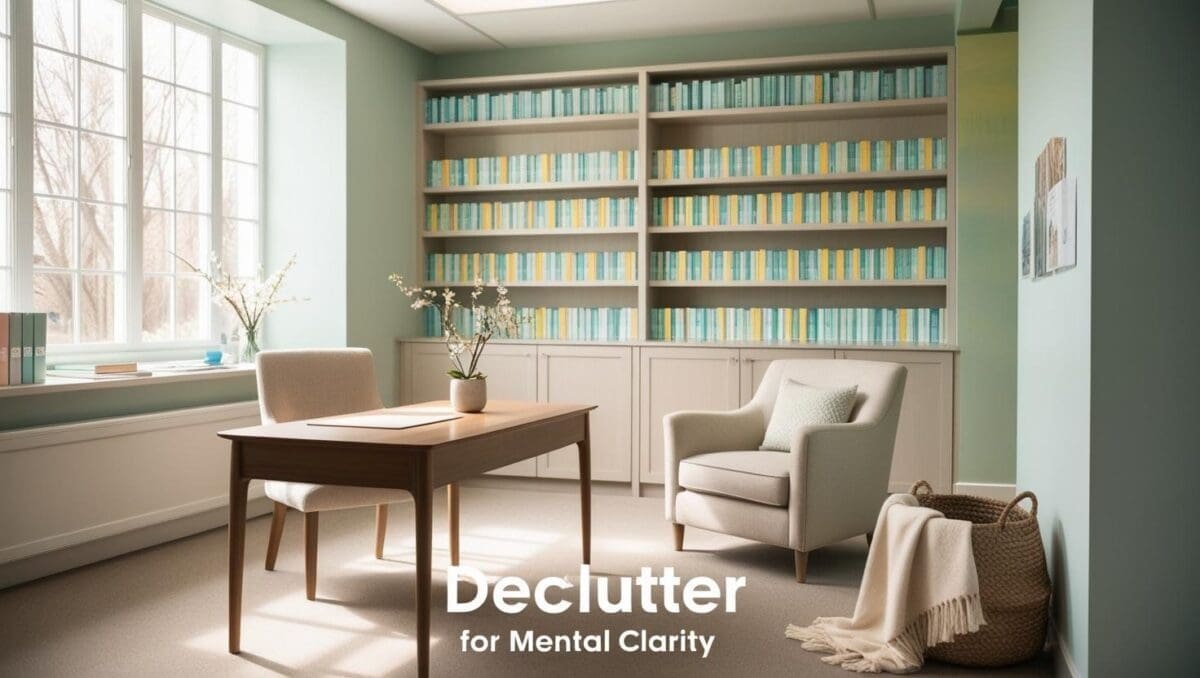Starting your career as a counselor can be both exciting and challenging. One of the biggest hurdles new counselors face is building their toolkit of effective resources, especially when there’s not a large budget to work with. But here’s the good news: you don’t need a lot of money to create impactful, hands-on tools that can help your clients feel seen, heard, and supported.
In fact, some of the most effective therapy tools are simple, low-cost DIY projects you can make yourself. These tools not only enhance your practice but can also be customized to fit the unique needs of your clients. Whether you’re working with children, adolescents, or adults, there are a variety of affordable DIY therapy tools that can foster a deeper therapeutic relationship, promote emotional well-being, and even reduce the stress of both your clients and yourself.
In this article, we’ll walk you through five simple and budget-friendly DIY therapy tools that can make a huge difference in your practice. Each tool is easy to create, easy to use, and can be adapted for different therapeutic approaches.

1. Emotion Wheel: Helping Clients Identify Their Feelings
What is the Emotion Wheel?
The Emotion Wheel is a simple visual tool that helps clients identify and articulate their emotions. For many clients, particularly those who are new to therapy or have difficulty expressing their feelings, this tool can serve as a helpful guide. It’s especially useful with children or clients who may struggle with verbalizing their emotions.
How to Make an Emotion Wheel
Materials Needed:
- Cardstock
- Scissors
- Markers
- A paper brad or pin
- Small paper plate (optional)
Steps:
- Cut a large circle from the cardstock and divide it into several sections, like a pie chart.
- Label each section with different emotions (e.g., happy, sad, frustrated, anxious, calm).
- Cut a smaller circle for the arrow that will point to the current emotion. Attach it to the center of the wheel using a paper brad or pin.
- Decorate the wheel with colors or symbols that resonate with you and your clients.
How to Use It in Therapy
The Emotion Wheel can be a game-changer, especially when working with clients who find it difficult to express themselves. Use the wheel in your sessions by asking clients to point to the emotion they’re feeling in the moment. For children, you can turn this into a fun, interactive activity by asking them to “spin” the wheel and then discuss why they’re feeling that particular emotion.
Example:
During a session, you could say, “Let’s use the Emotion Wheel to check in today. What are you feeling right now?” This can give the client a visual cue to help them articulate their feelings, and it’s a great way to start building emotional literacy and self-awareness.

2. Stress Balls: Relieving Tension and Promoting Mindfulness
What are Stress Balls?
Stress balls are small, tactile objects that help clients release physical tension by squeezing them. These tools are simple to make and can be used in therapy to promote relaxation, mindfulness, and emotional regulation.
How to Make a Stress Ball
Materials Needed:
- Balloon
- Flour or rice
- Funnel
Steps:
- Stretch out the balloon and fit the funnel into the neck of the balloon.
- Fill the balloon with flour or rice, making sure it’s tightly packed to give the ball some resistance when squeezed.
- Once full, tie off the balloon securely. You can double up by placing the filled balloon inside another balloon for added durability.
How to Use It in Therapy
Stress balls are incredibly versatile. You can use them in several ways to support your clients’ emotional regulation. They can be used during moments of anxiety, frustration, or when a client needs to calm down. You can also incorporate them into mindfulness exercises, guiding your clients to focus on their breath while squeezing the ball slowly.
Example:
When working with a child who feels anxious, you might say, “Let’s try a breathing exercise. Hold the stress ball and take a deep breath in, then slowly squeeze the ball as you exhale. Let’s do this together five times.” This helps to both calm the client and keep them engaged in the therapeutic process.
3. Mindfulness Stones: Anchoring Clients in the Present Moment
What are Mindfulness Stones?
Mindfulness stones are simple objects that can carry affirmations, calming words, or symbols that remind clients to stay grounded in the present. The physical act of holding a stone and focusing on its message can be an effective mindfulness technique, especially when clients are experiencing anxiety or overwhelming emotions.
How to Make Mindfulness Stones
Materials Needed:
- Small stones (found in nature or purchased cheaply)
- Permanent markers or paint
- Optional: Stickers or decorative materials
Steps:
- Collect small, smooth stones that fit comfortably in the hand.
- Use permanent markers or paint to write positive affirmations (e.g., “breathe,” “relax,” “calm”) or calming symbols (e.g., a heart, flower, or sun).
- Optional: Decorate the stones with calming colors or images.
- Place the stones in a small bag or container for easy access.
How to Use It in Therapy
Mindfulness stones can be used as part of grounding techniques during sessions or at home. When a client feels anxious or disconnected, ask them to pick up a stone and focus on its message. You can incorporate this into a mindfulness exercise by encouraging clients to hold the stone while focusing on their breath.
Example:
In a therapy session, you might say, “Take a moment to hold one of these stones in your hand. Close your eyes and focus on the word or image on the stone. Take a few deep breaths and let the word or image help you feel grounded.”
4. Feelings Flashcards: Enhancing Emotional Awareness
What are Feelings Flashcards?
Feelings flashcards are cards with various emotions and facial expressions printed on them. They help clients—especially children—recognize and label their emotions. These cards can be a great resource for clients who have difficulty expressing their feelings verbally.
How to Make Feelings Flashcards
Materials Needed:
- Cardstock
- Markers or printed images
- Scissors
Steps:
- Cut cardstock into small rectangles.
- Draw or print images of different facial expressions (happy, sad, angry, frustrated, etc.) on the cards.
- Optionally, write the name of the emotion beneath each image.
How to Use It in Therapy
Use these flashcards during check-ins or as part of emotion-focused activities. You can also play games with clients, asking them to pick a card and then describe a time when they felt that emotion. This encourages emotional expression and self-awareness.
Example:
During a session with a child, you could ask, “Can you show me the card that best matches how you’re feeling today? Let’s talk about what happened when you felt that way.”
5. Therapy Dice: Adding Fun and Engagement to Sessions
What is Therapy Dice?
Therapy dice are a fun, interactive way to encourage participation in therapy. The dice have various prompts or tasks on each side, which the client rolls to determine their next activity. This tool is especially helpful when working with clients who may feel uncomfortable or reluctant to participate.
How to Make Therapy Dice
Materials Needed:
- Blank dice or cardboard
- Markers
- Small paper or stickers
Steps:
- Use a blank die (or create a cube from cardboard) and write different prompts or activities on each side (e.g., “Share something you’re proud of,” “Describe a challenge you faced this week,” “Try a breathing exercise”).
- Optionally, create different color-coded dice for different themes, such as one for emotions and one for activities.
How to Use It in Therapy
Therapy dice make sessions more engaging and less predictable. They can be used to guide conversations, prompt self-reflection, or introduce therapeutic exercises. Rolling the dice adds an element of fun, which can be especially useful with children or clients who may feel nervous about therapy.
Example:
In an individual session, you might say, “Let’s roll the dice and see what activity we’ll do today. Whatever it lands on, we’ll work on together!” This not only engages the client but also encourages openness to new activities.
Embracing the Power of DIY Tools
Starting your counseling career on a tight budget doesn’t mean sacrificing the quality of care you provide to your clients. With just a few simple materials, you can create powerful therapeutic tools that can make a significant impact in your sessions. By making these DIY tools, you’re not only enhancing your practice but also fostering a deeper connection with your clients through creativity and personal touch.
So, whether you’re using an emotion wheel to help clients articulate their feelings or a stress ball to manage anxiety, these tools are valuable resources that can help new counselors navigate their therapeutic journey while staying within budget. With these DIY tools, you’ll have a toolkit that’s as thoughtful and effective as it is affordable.

About the Author
Hi, I’m Eve, a former school counselor with a master’s degree in School Psychology and a passionate advocate for children and families navigating sensory challenges. As a mom of children with sensory sensitivities, I deeply understand the journey special-needs parents face, and I dedicate myself to researching and sharing practical solutions to help children thrive and feel comfortable in their bodies. My goal is also to empower counselors, therapists, and psychologists with creative strategies and supportive resources to enrich their everyday practice. When I’m not writing or exploring new therapeutic approaches, you’ll find me spending quality time with my family and continually seeking inspiration from everyday moments.


